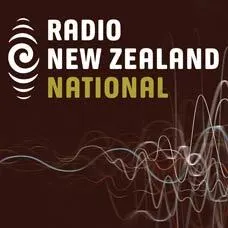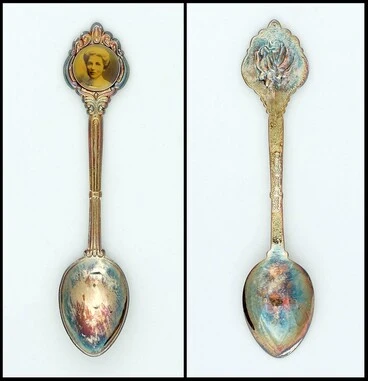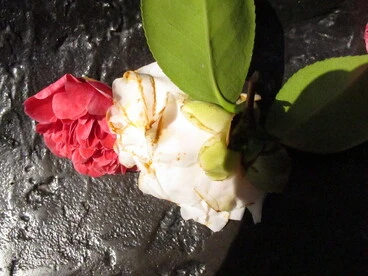2017 Women's March
A DigitalNZ Story by National Library Services to Schools
On 21 January 2017, millions of people around the world, including New Zealand, took part in the largest global human rights demonstration ever, the Women’s March.
These resources and text relate to the 2017 Women’s March in New Zealand, and also the wider context of women’s rights and equality. They have been sourced and collated from DigitalNZ and other websites.
Kate Sheppard
Manatū Taonga, the Ministry for Culture and Heritage
Womens march
Alexander Turnbull Library
NZ leads marches for women's rights
Radio New Zealand
Background
On 21st January 2017 people around the world took part in what became the largest global human rights demonstration – the Women’s March.
In Aotearoa New Zealand there were Women’s Marches and rallies across the country, not only in Auckland, Wellington, Christchurch and Dunedin but also in smaller towns like Invercargill.
The marches celebrated human rights and highlighted concerns about social justice. They were also deliberately timed to coincide with Donald Trump's inauguration and his first day in office as US president. Many of those marching were women whose chants, placards and pink 'pussy' hats expressed concerns over President Trump’s attitude toward women.
The protest sign on the curiosity card mentions Kate Sheppard because she is seen as a leader in the fight for New Zealand women to gain the vote. It was Kate Sheppard’s (and others like her) tireless work that eventually led to New Zealand becoming the first self-governing nation in the world to give women the vote in 1893.
Millions of women around the globe march in solidarity
Radio New Zealand
Reflections on this weekend's Women's March
Radio New Zealand
Kiwi railway station: 1955 protesters
Manatū Taonga, the Ministry for Culture and Heritage
Context
Kate Sheppard
Kate Sheppard was the leading light of the New Zealand women’s suffrage movement. In 1893 Kate Sheppard and her fellow suffragists gathered the signatures of nearly 32,000 women to demonstrate the groundswell of support for their cause. … The Electoral Act 1893 was passed by both houses of Parliament and became law on 19 September. The news took New Zealand by storm and inspired suffrage movements all over the world.
Source: 'Kate Sheppard', URL: https://nzhistory.govt.nz/people/kate-sheppard, (Ministry for Culture and Heritage), updated 13-Mar-2018
------------------------------------------------------------------------------------------------------------------------------------------------------------------------------------------
Women's rights 1970s-1990s
Women’s liberation burst onto the New Zealand scene in 1970, when women began to demand equality in a much more confrontational way than ever before. Founded on the achievements of the suffragists – the first wave of feminism – and drawing inspiration from the American civil rights movement, women’s liberationists around the world rallied to fight for women’s rights on a more diverse range of issues than in previous decades. In New Zealand, they sought equality in pay, employment and education. They challenged gender norms and the gendered division of labour. Demands for free contraception, abortion on demand and round-the-clock childcare were also at the core of the movement, along with revealing and opposing all forms of violence against women.
Lesbian political groups
Lesbian political groups organised various activities, including publishing, summer camps, sports and social clubs, pickets and demonstrations. Some worked with feminist groups on a range of issues such as abortion rights, rape, women's centres, and peace and anti-racism actions.
Lesbians also worked with gay men to support the decriminalisation of male homosexual acts. Lesbians argued that while male homosexual acts remained illegal, all same-sex relationships had criminal associations. The Homosexual Law Reform Act was passed in 1986. Lesbians also lobbied for a prohibition of discrimination based on sexual orientation. This was achieved with the passage of the Human Rights Act 1993.
Alison J. Laurie, 'Lesbian lives - Lesbian political struggles', Te Ara - the Encyclopedia of New Zealand, http://www.TeAra.govt.nz/en/lesbian-lives/page-5 (accessed 21 September 2018)
Māori women and Māori rights
During the 1970s and 1980s, Māori women were at the forefront of Māori protest movements about land rights, racial inequality and Māori sovereignty. The Te Rarawa kuia Whina Cooper led a coalition of groups known as Te Ropu o te Matakite to combat further alienation of Maori land. This movement led the Māori Land March in the spring of 1975, the climax of which was Whina leading around 5,000 marchers into Parliament grounds to present a petition supporting the objectives of the march signed by 60,000 people to the prime minister, Bill Rowling. Other Māori women at this time such as Ngahuia Te Awekotuku, Ripeka Evans and Donna Awatere, were influenced by the women's liberation movement, which critiqued the perceived patriarchal nature of traditional Māori leadership. Some Māori feminists also raised the issue of Māori women's speaking rights on the marae.
Source: Rawinia Higgins rāua ko Paul Meredith, 'Te mana o te wāhine – Māori women - Leadership and activism, 1950s to 1980s', Te Ara - the Encyclopedia of New Zealand, http://www.TeAra.govt.nz/en/te-mana-o-te-wahine-maori-women/page-6 (accessed 1 August 2018)
Today
The women’s liberation movement forced immense social change and set in motion processes which led to a dramatic improvement in the status of women within New Zealand society However in 2018, 125 years after women won the right to vote, gender-based inequality continues to exist in New Zealand. Women have held some of the most powerful and high-profile public offices, including the prime minister, governor-general, attorney-general and chief justice. Yet women continue to be paid less than men, are more likely to be unemployed or in unpaid work, and experience high rates of violence and abuse.
A hallmark of the contemporary women’s movement is its multifaceted nature and the interconnected diversity of the issues being fought for. Its strategy recognises that many women are confronted by multiple layers of discrimination around class, ethnicity, disability, religion and gender. This style of feminism aims to be more inclusive than the unilateral approach of previous waves of feminism.
'Stories of women's activism', URL: https://nzhistory.govt.nz/culture/suffrage125/three-waves-of-womens-activism, (Ministry for Culture and Heritage), updated 20-Jul-2018
Working Women’s Council, 1981
Manatū Taonga, the Ministry for Culture and Heritage
International Womens Day for Peace march, Queen Street
Auckland War Memorial Museum Tāmaki Paenga Hira
Fertile questions
Has women’s right to vote ‘fixed’ inequality?
In the face of adversity, what causes some individuals to prevail?
Who do you know who is like Kate Sheppard? How?
He aha te tino rangatiratanga?
What is your question?
Quick facts
- Green Kate Sheppard traffic lights now signal when it’s safe to cross the road at eight intersections near parliament, Wellington.
- ‘A great woman has gone whose name will remain an inspiration to the daughters of New Zealand while our history endures.’ This quote appeared in the Christchurch Times when Kate Sheppard died in July 1934.
- Women having 5 ounces less brain was put forward in parliament in an argument as to why women shouldn’t get the vote.
- The 2017 Women’s March demonstrations were likely the largest single-day demonstrations in American history. Over 4 million people protested.
Kate Sheppard Teaspoon
Archives New Zealand Te Rua Mahara o te Kāwanatanga
Kate Sheppard National Memorial
Christchurch City Libraries
Other resources
2017 Women’s March in Christchurch — marching for equal rights in the country that was the first to give women the right to vote.
New Zealanders and the British suffrage movement — How New Zealand citizens contributed to the British suffrage movement.
Iconic images of women protesters — 100 years of female defiance in photos.
Our Wahine — 125 extraordinary women — an illustrated history of New Zealand’s extraordinary women.
Photos of a Women’s March weekend — the one-year anniversary of the massive 2017 Women's March.
She signed Kate Sheppard — meet New Zealand’s best-known suffragist, Kate Sheppard.
Stories of New Zealand women's activism— an opportunity to remember the suffragists and what they fought for.
Suffrage 125 timeline— womens’ events in New Zealand history.
#WHYIVOTE — women’s representation in New Zealand.
Women’s suffrage — after 100 years since millions of women got the vote around the world, how do their rights compare now?
Planting a 'Kate Sheppard' camellia, 1993
Manatū Taonga, the Ministry for Culture and Heritage
Voting in New Plymouth, 1893
Manatū Taonga, the Ministry for Culture and Heritage
This story was compiled and curated by Te Puna Mātauranga o Aotearoa | National Library of New Zealand, Services to Schools staff, in 2019.








